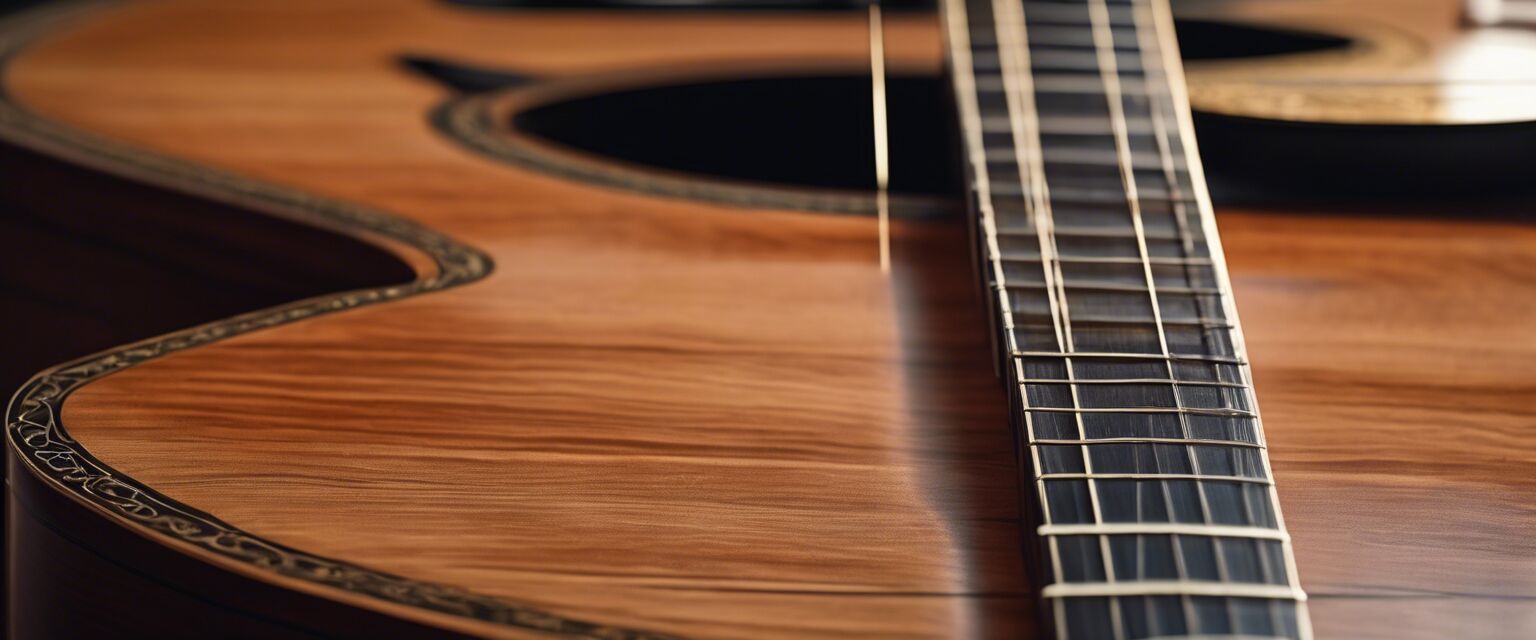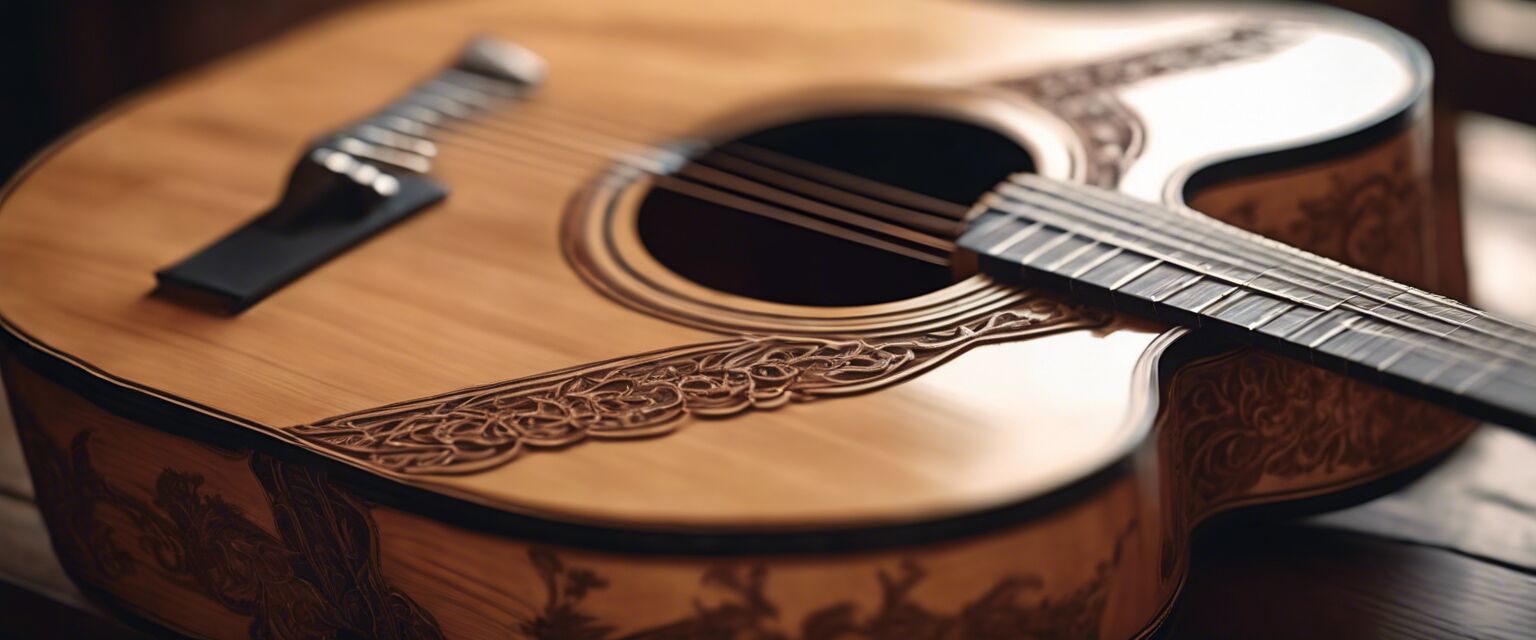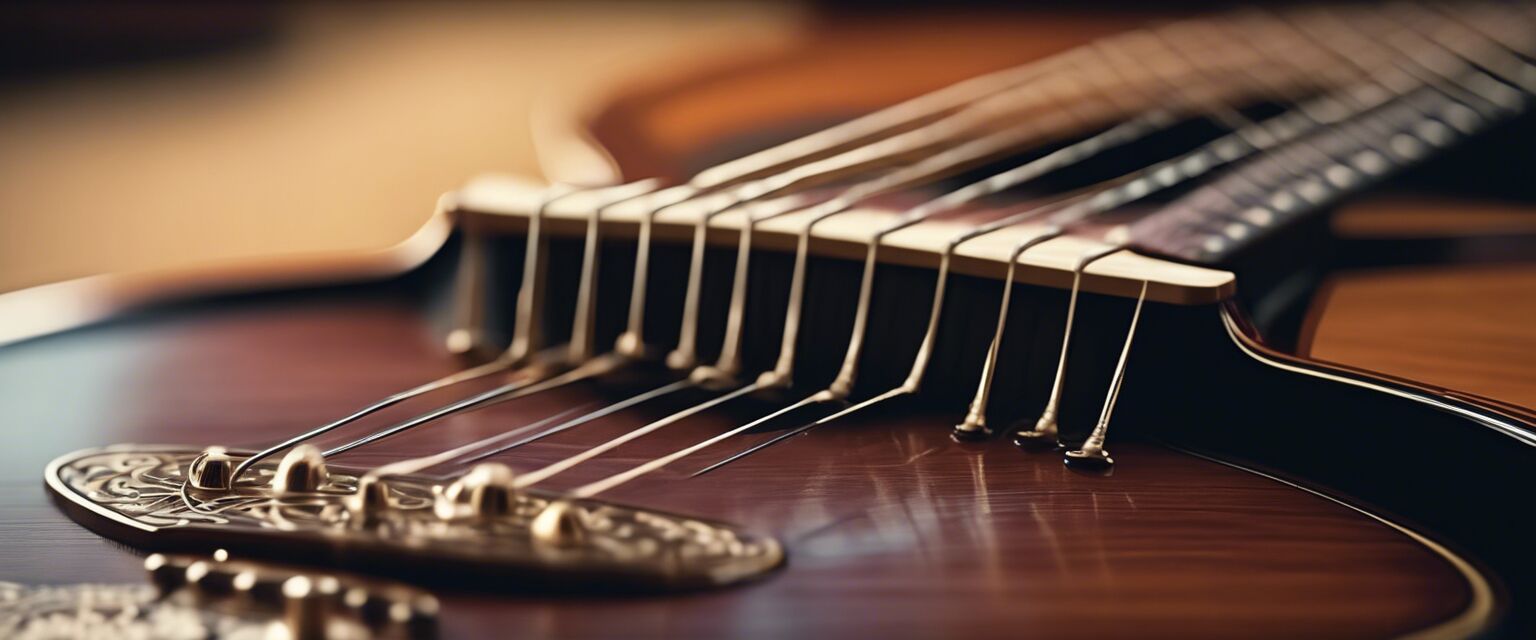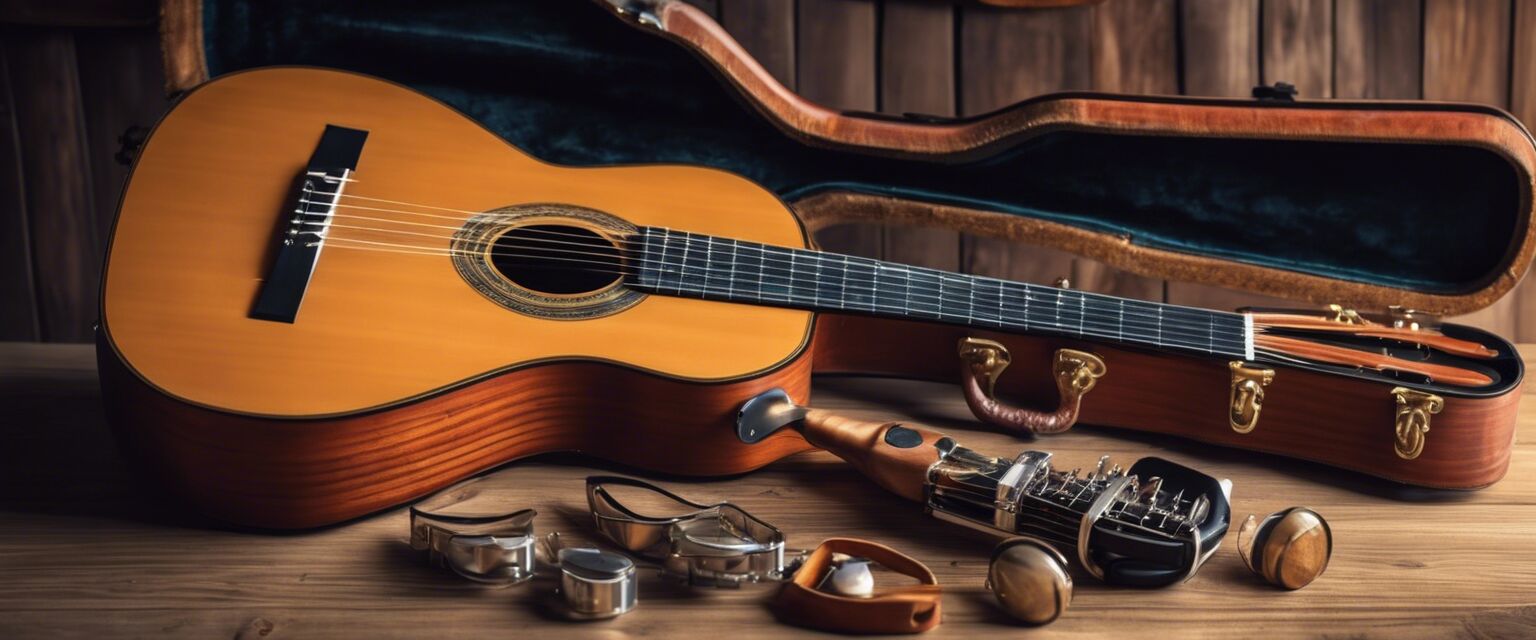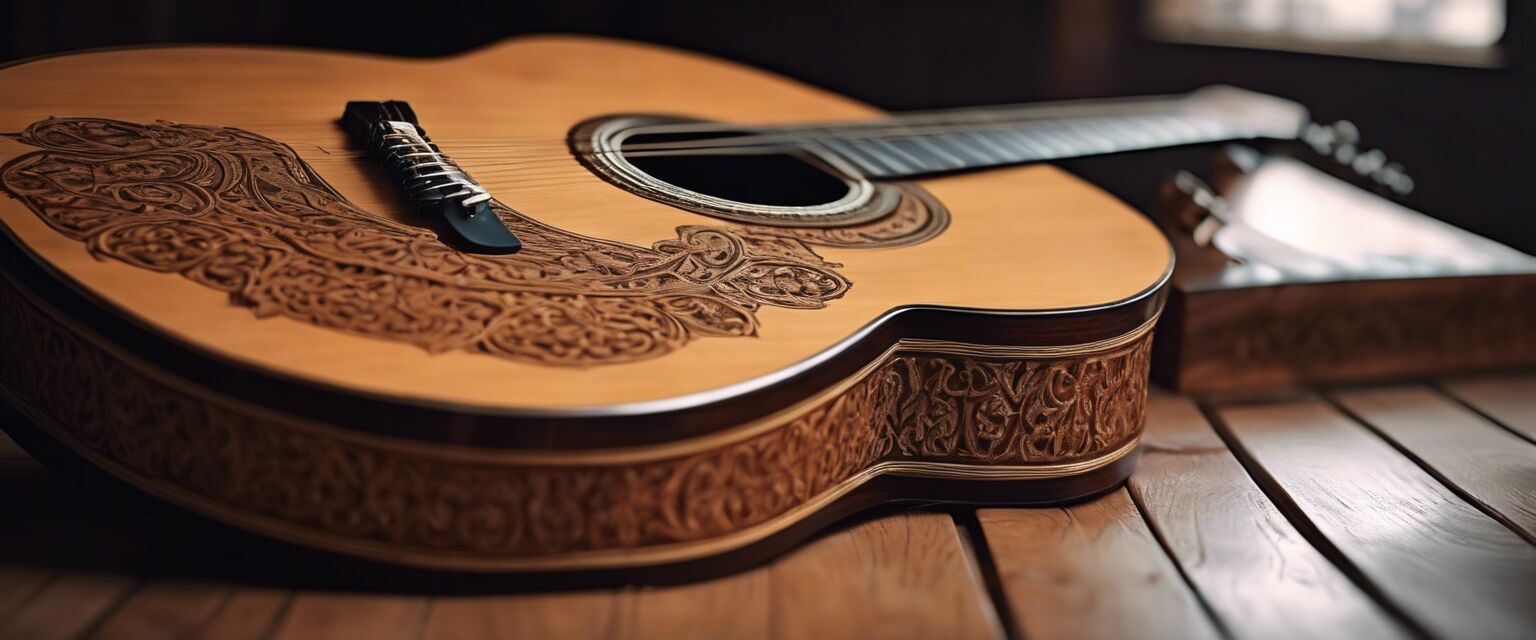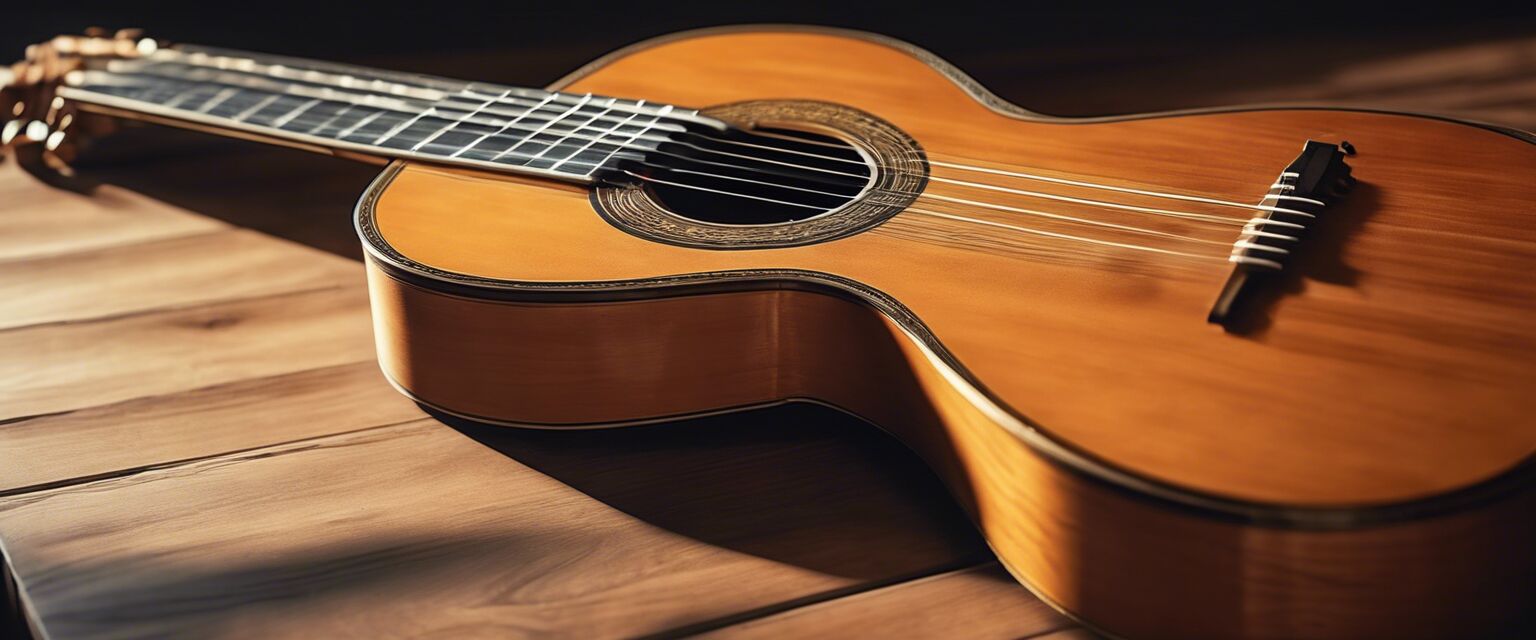
History of Classical Spanish Guitar
Key Takeaways
- The classical Spanish guitar has roots dating back to the ancient lute-like instruments.
- It evolved significantly during the Renaissance and Baroque periods.
- Prominent composers have contributed to its repertoire, elevating its status in classical music.
- Modern interpretations of the guitar have enhanced its global appeal.
The classical Spanish guitar, with its rich tones and historical significance, has long been revered in the world of music. This article delves into its fascinating journey, tracing its origins, evolution, and impact on the music landscape.
Origins of the classical Spanish guitar
The history of the classical Spanish guitar can be traced back to various stringed instruments that emerged in ancient times. The evolution of these instruments laid the groundwork for what we recognize today.
| Period | Instrument | Characteristics |
|---|---|---|
| Ancient | Lyre | Strings made of gut, played with a plectrum. |
| Medieval | Lute | Rounded body, multiple strings, played with fingers. |
| Renaissance | Vihuela | Flat-back design, used for both strumming and plucking. |
The Renaissance influence
The Renaissance period marked a significant transformation in string instruments. The vihuela, a Spanish string instrument, gained prominence during this era, showcasing intricate designs and rich sounds. This period also underscored the growing popularity of guitar music.
Evolution in construction
The evolution of the classical Spanish guitar's construction can be seen through its materials, design, and playing techniques. Early guitars had fewer strings and were crafted with various kinds of wood, including cedar and spruce.

Baroque and Classical periods
As musical styles began to shift during the Baroque and Classical periods, the guitar also underwent changes. Notable luthiers improved the instrumentâs design, increasing its volume and tonal quality.
| Time Period | Key Developments |
|---|---|
| Baroque | Increased use of frets and new playing techniques. |
| Classical | Standardization of guitar size and string count. |
Prominent composers and their influence
Many composers have shaped the repertoire for the classical Spanish guitar, helping elevate its status. A few notable names include:
- Fernando Sor
- Francisco Tárrega
- Isaac Albéniz
Musical contributions
The contributions of these composers not only enhanced the guitar's repertoire but also inspired generations of guitarists around the world. Their works typically feature intricate melodies, rich harmonies, and innovative techniques.

The modern classical guitar
Today, the classical Spanish guitar has gained worldwide recognition, transcending cultural boundaries. The instrument has embraced modern techniques while maintaining its traditional roots.
Modern design and technology
Advancements in technology have revolutionized guitar-making, with modern materials and methods enhancing sound quality and playability. Enthusiasts and professionals alike now enjoy a wide variety of styles and features.
Conclusion
In summary, the classical Spanish guitar is not just an instrument; it's a storied part of musical history. The blending of ancient influences with modern innovations continues to inspire musicians and captivates audiences around the globe. To explore more about different types of classical guitars, check out our guide on beginner classical guitars.
Pros
- Rich historical significance.
- Wide array of musical repertoire.
- Diverse playing styles and techniques.
Cons
- Can be expensive for quality instruments.
- Requires consistent practice to master.
- Sound can vary greatly among different makes and models.
Beginner tips for playing classical Spanish guitar
- Start with basic chord shapes to build your foundation.
- Practice regularly to develop finger strength and dexterity.
- Listen to classic pieces to understand rhythm and dynamics.
- Consider taking lessons to improve your technique.
For more information on classical guitar accessories, you can visit our page on classical guitar accessories.
